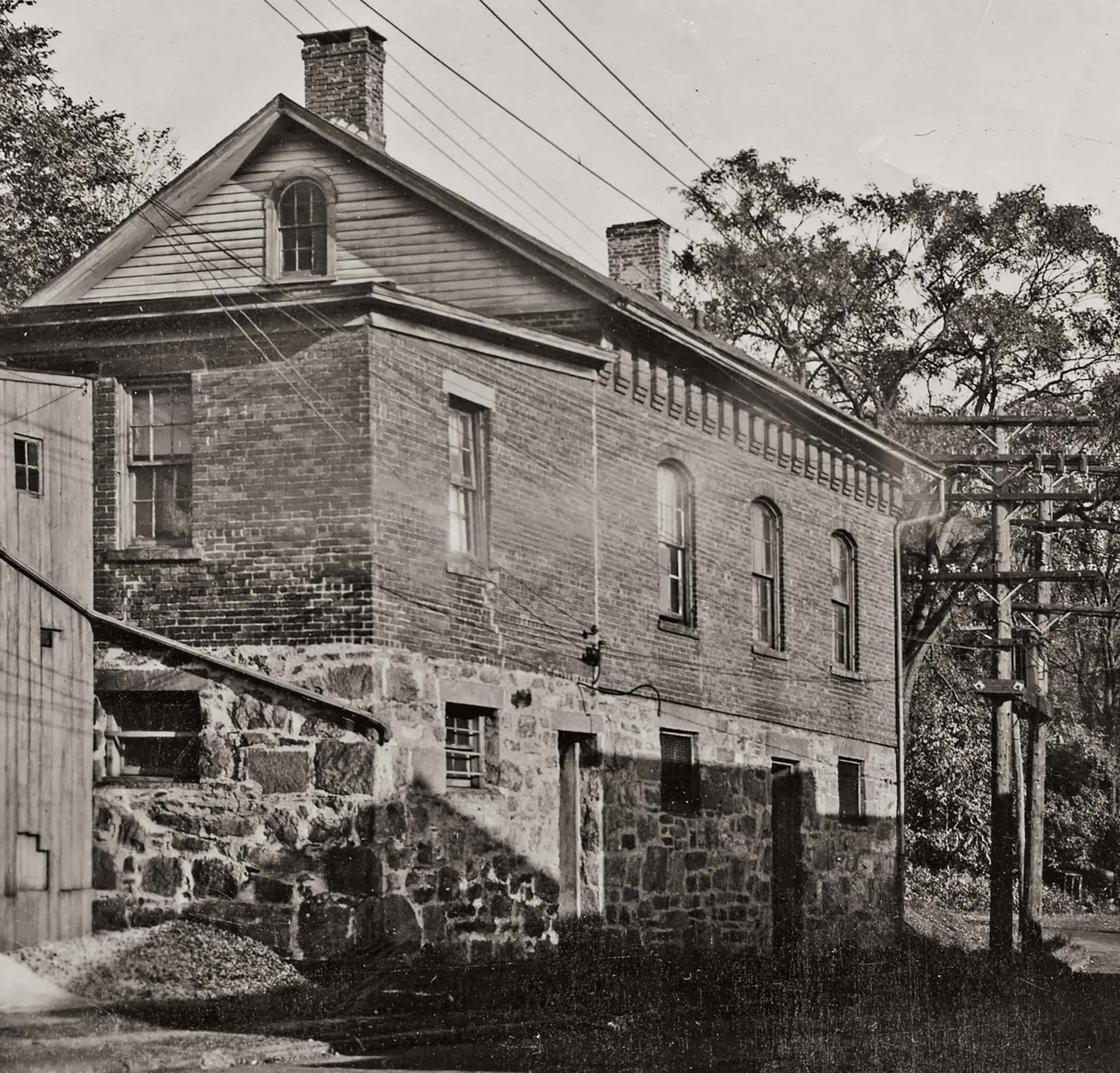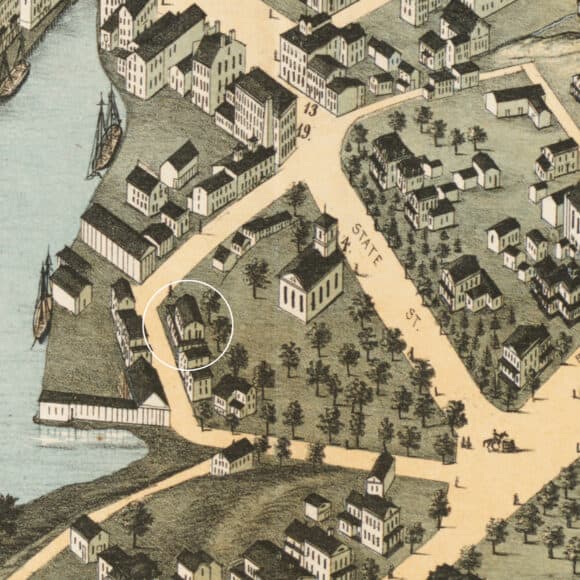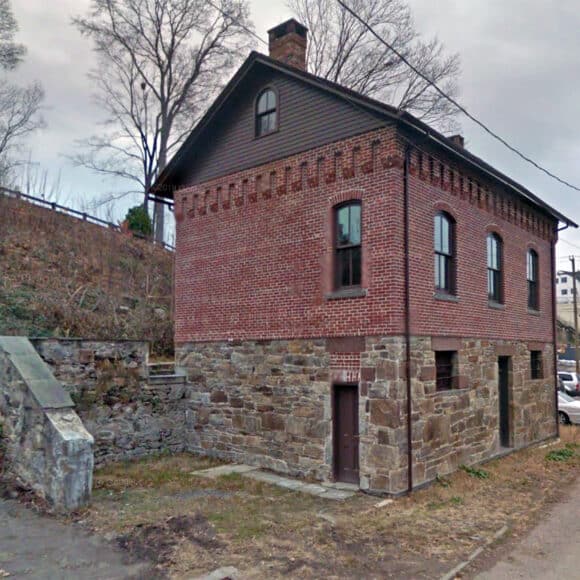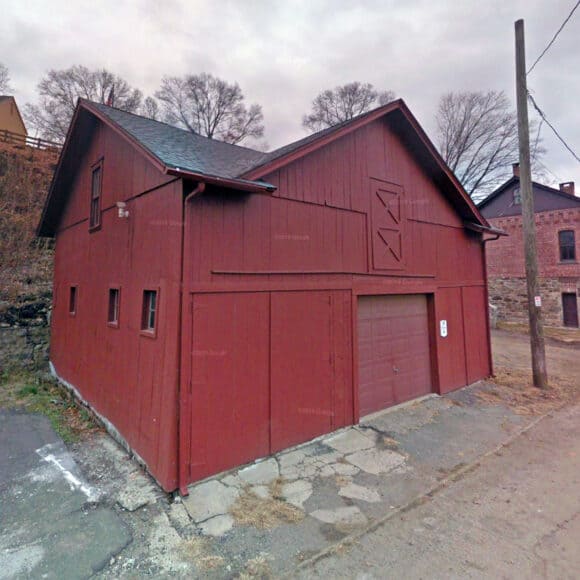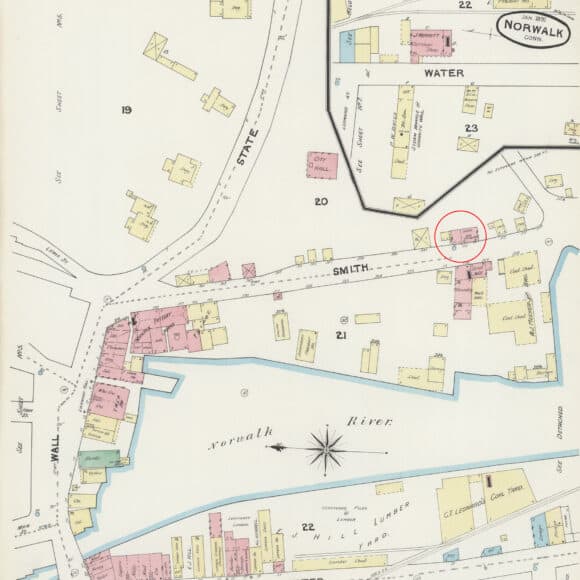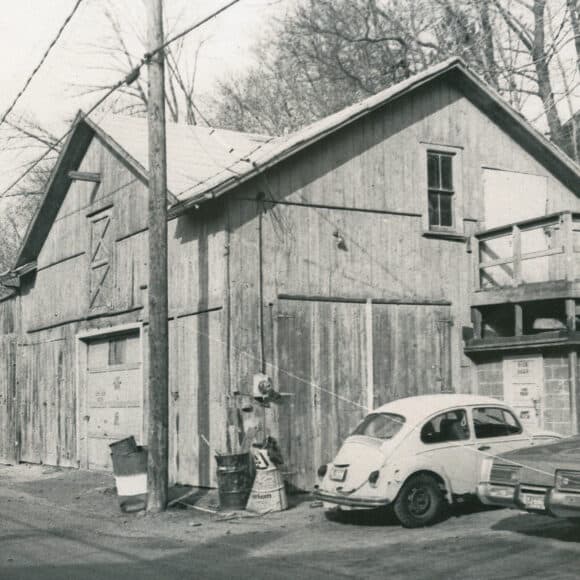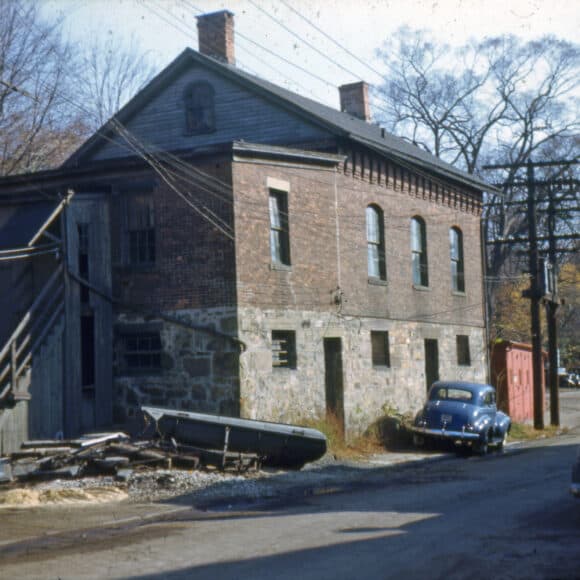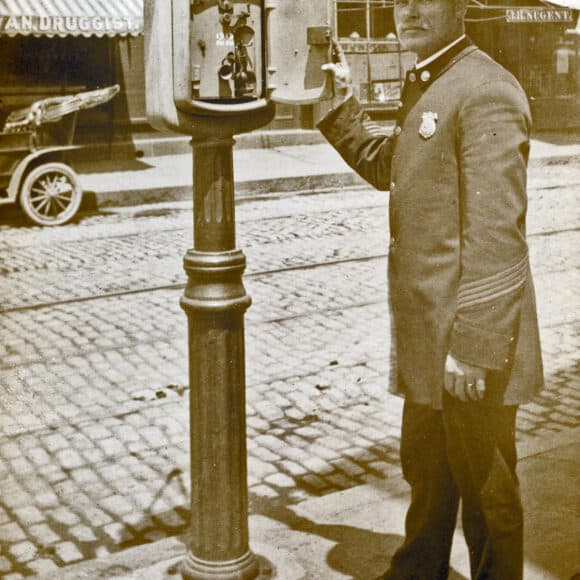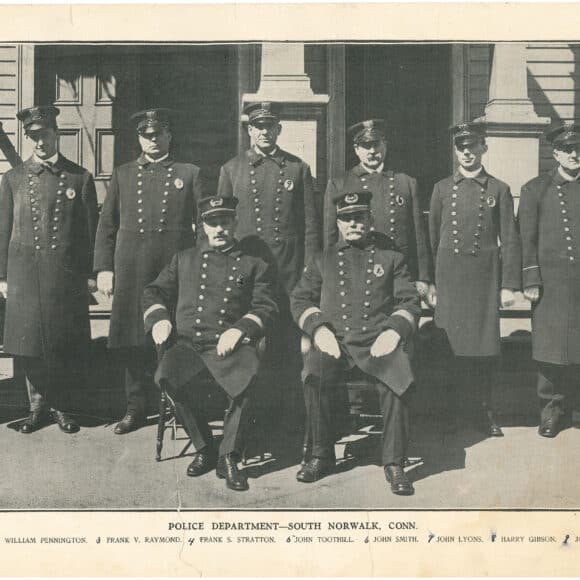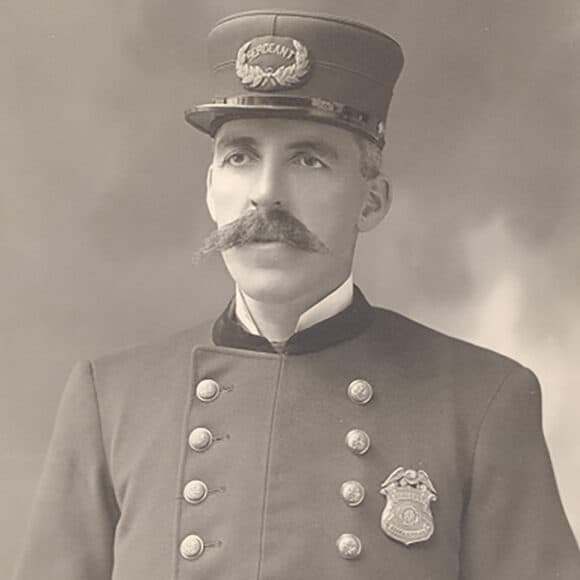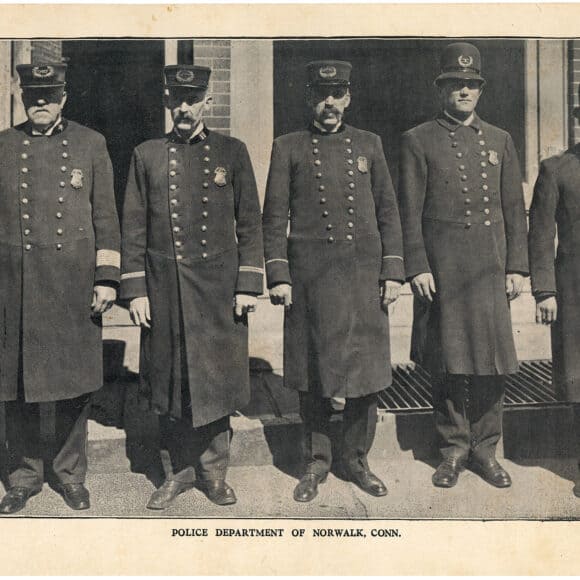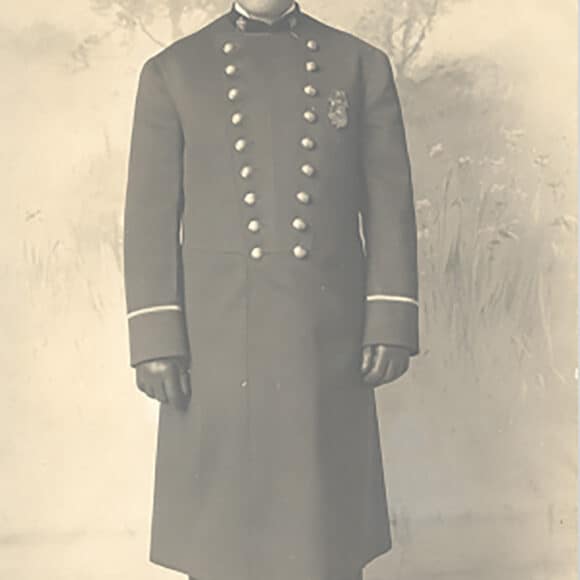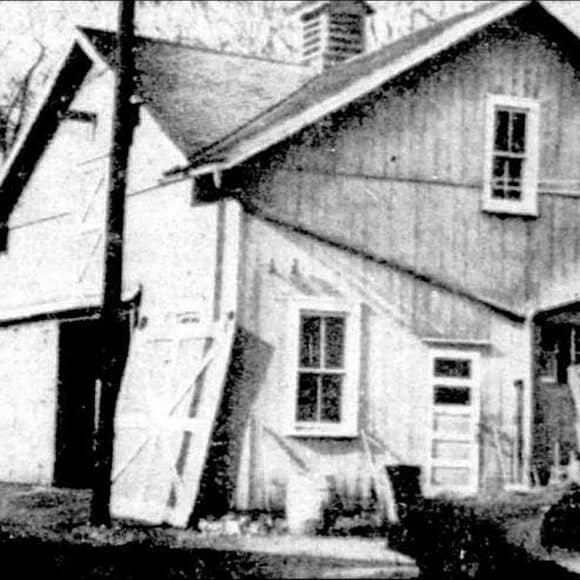The Lockup and Barn
The building now known as the Smith Street Jail was once part of the A. E. Smith Pottery Works, one of Norwalk’s oldest potteries.
Started in 1825 by Asa E. Smith (1798-1879), the Pottery was established in a factory at the foot of Mill Hill, only a stone’s throw from the bridge across the Norwalk Harbor. The factory grew quickly as did Smith’s distribution; local commerce was served by shipments directly from the Norwalk warehouse, while locations further afield were supplied from a warehouse maintained in Peck Slip, NY.
Over the course of the mid-1800s, Asa Smith attempted to pursue new business ventures. He took two partners, the first of which was Noah Selleck. This partnership was not long lasting; it dissolved within six years. The second partner was Smith’s own cousin, Noah S. Day, who along with new business possibilities brought with him a series of financial troubles. After serving a day’s imprisonment in New York because of Noah’s economic issues, Smith decided to dissolve the partnership and continue the pottery as a sole proprietorship until his eldest son, Theodore E. Smith, turned 16. Once of age, Theodore assumed the role of manager of the Peck Slip warehouse. Within a few years, Asa’s other sons, Asa Jr. and Howard Hobart, joined the family business, which then became A. E. Smith & Son.
In 1874, the factory changed its name one more time and became A. E. Smith’s Sons Pottery Company. The concern was purchased by Norwalk Pottery Company in 1887, after suffering an economic failure. However, at its height, the Smith pottery employed 50 men, had two ships charged with importing clay from New York and New Jersey, pinewood from Virginia, and moved finished wares to and from New York.
Just before Asa E. Smith retired in 1860, the town began addressing the local need for a lockup; until this time, there was no place to hold arrested offenders to await sentencing. The selectmen appointed a committee composed of three men – Joseph W. Hubbell, Henry Selleck, and Jonathan Camp – to explore and purchase a suitable location for the lockup. They found a small building at the foot of Mill Hill. Although there is no discussion of the pottery building and its subsequent adaptive reuse as a lockup in either the town proceedings or land records, there is some hint of the continued integrative function in the town records which describe the building as “a Branch Workhouse and lockup…”
At the time of purchase, the building now known as the jail was a one-story stone structure. Based on archaeological finds of pottery fragments and waste material from the manufacturing process, it was likely used as an outbuilding for the pottery works.
The newly acquired building needed some renovation to be able to suit its use as a jail. The first floor was partitioned into two rooms with cells and privies with a surmounting second floor made of brick. These alterations took several months to complete and cost a total of $1,250. It was later officially established as a “workhouse and house of correction for the confinement of offenders sentences thereto.”
In the 1870s, a two-story brick addition was built on the eastern elevation of the jail. Known as the “tramp house,” this section specifically addressed the large vagrant problem in the city and offered the homeless a warm meal and shelter for the night in exchange for work.
The building continued to function as a jail (lower level) with housing for the jailor (second floor) until about 1940 when it was decommissioned. The second floor was inhabited until the mid-1950s, after which point the building became abandoned. After the completion of archaeological excavations in the 1970s, the Norwalk Historical Commission hired a contractor to renovate the building and create two housing units on the second floor, each with a bath and closet. The larger of the two apartments had a working fireplace and cost $400/month. The smaller, by contrast, cost $350 per month and only had a flue, which could support a stove should the tenant want one. The money collected from rent went directly into the City’s general fund.
These two apartments were rented until 2010 when a fire made the jail uninhabitable. The Norwalk Historical Commission is now in the process of renovating the property and incorporating it into the Mill Hill Historical complex.
Barn
Dr. Daryn Reyman-Lock is a native of Connecticut. After graduating from Lehigh University with a B.S. in Geologic Sciences and a B.A. in Archaeology, she matriculated to the University of Nottingham in England to complete a Masters and Ph.D. in Archaeology. Her research is concerned with the social constructs of space and phenomenology.
Upon returning to the United States in 2012, she began working as a historic preservation specialist. Dr. Reyman-Lock often works closely with non-profits to curate exhibits, catalogue and move museum collections, and research historic landscapes and buildings. She also consults for municipalities on a variety of projects.


